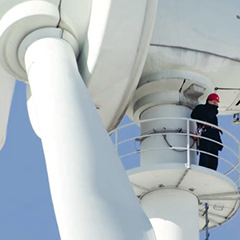It is undoubtedly an exciting time to be involved in offshore wind in Europe. Offshore wind will probably make the alternative energy sector’s largest contribution to meeting Europe’s ambitious target of reducing CO2 emissions by up to 90 per cent by 2050. ‘Probably’. A new report based on the feedback of 200 executives within the industry explores how to turn the opportunities into reality. PES presents an exclusive extract of the Freshfields Bruckhaus Deringer findings…
Offshore wind enters uncharted waters European governments like offshore wind. In theory it should make the greatest impact on achieving European 2020 renewable energy targets and create more new jobs than any other renewable energy source. However, the sector is still in its infancy. Just under 5GW of offshore wind capacity is operational in Europe.
This pales in comparison with the 70GW of solar or 110GW of onshore wind capacity operational in Europe at the start of 2013. According to the National Renewable Energy Action Plans (NREAPs), some 43GW of offshore wind capacity will be installed in European waters by 2020. The bulk of this new capacity will be in the UK (18GW), Germany (10GW) and France (6GW). On an annual basis, that means over 4.5GW must be installed every year between 2013 and 2020. These are ambitious targets – last year a record 1.7GW of offshore wind was installed in Europe.
What could hold back progress?
An uncertain subsidy environment, in the form of new mechanisms or cuts, ranks high among the concerns voiced by survey participants – 83 per cent believe the introduction of new subsidy mechanisms represents a risk to successful future offshore wind project development.
Our survey data also shows there are genuine fears that the ongoing recession in the eurozone will reduce liquidity in the debt and equity capital markets. In 2012, project debt financing decreased 28 per cent to $2.1bn.
This is an issue, particularly since we estimate that about $9bn of project debt finance will be needed each year from 2013 if 43GW of capacity is to be installed by 2020. Financing issues aside, this ramp-up in capacity is likely to put pressure on the supply chain to innovate and reduce costs.
The new financing paradigm
Around two-thirds of survey respondents believe there is insufficient equity financing for European countries to meet their offshore wind targets.
Due to the increasing size of new offshore wind farms, utilities can no longer finance the equity component off balance sheet. Instead, they are relying on long-term investors including European pension funds and Japanese trading houses. Survey respondents expect this trend to continue – over 60 per cent expect international corporate or institutional investors to invest actively in European offshore wind farms during the next 18 months.



























